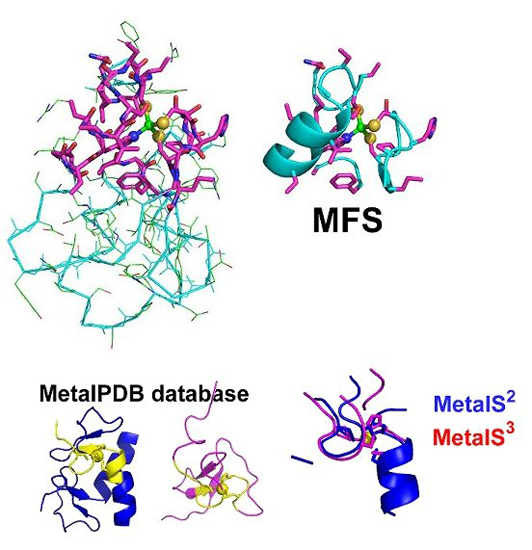
Metal ions play a functional role in numerous biochemical processes and cellular pathways. Indeed, about 40% of all enzymes of known 3D structure require a metal ion to be able to perform catalysis. The interactions of the metals with the macromolecular framework determine their chemical properties and reactivity. The relevant interactions involve both the coordination sphere of the metal ion and the more distant interactions of the so-called second sphere, i.e., the non-bonded interactions between the macromolecule and the residues coordinating the metal (metal ligands). The metal ligands and the residues in their close spatial proximity define what we call a minimal functional site (MFS). MFSs can be automatically extracted from the 3D structures of metal-binding biological macromolecules deposited in the Protein Data Bank (PDB). They are 3D templates that describe the local environment around a metal ion or metal cofactor and do not depend on the overall macromolecular structure. MFSs provide a different view on metal-binding proteins and nucleic acids, completely focused on the metal. Here we present different protocols and tools based upon the concept of MFS to obtain deeper insight into the structural and functional properties of metal-binding macromolecules. We also show that structure conservation of MFSs in metalloproteins relates to local sequence similarity more strongly than to overall protein similarity.
from #MedicinebyAlexandrosSfakianakis via xlomafota13 on Inoreader http://ift.tt/1X8j9ho
via
IFTTT
Δεν υπάρχουν σχόλια:
Δημοσίευση σχολίου